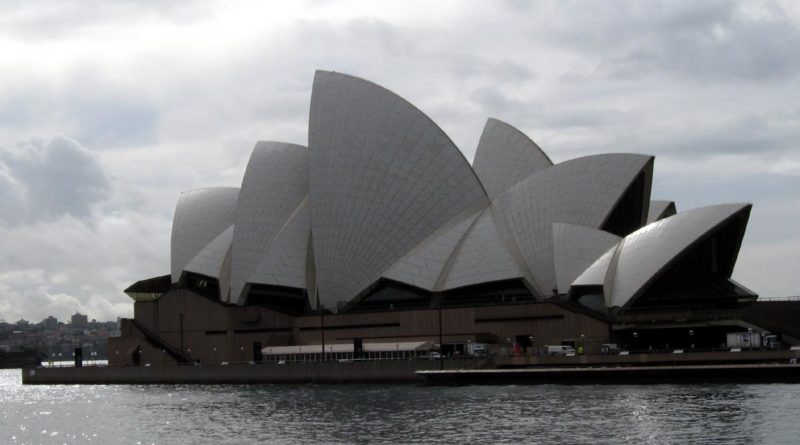Five Alternative Things To Do In Sydney
The best-known location and the one you can find on the biggest number of photos of Sydney is, of course, the famous Sydney Opera house.
Probably every visitor coming to Sydney takes a tour of that famous building, but if you are amongst those who are trying to find places that offer a different experience and are not necessarily in everyone’s travel itinerary, here are five things you might want to do in Sydney, the most populous city in Australia.
Wendy’s secret garden
The beautiful secret garden is the work of Wendy Whiteley. She needed some kind of outlet for her grief after her husband died in 1992, so, to distract herself from the pain, she started cleaning garbage and weeds from the old and abandoned railway yard. In the past 28 years, she transformed that patch of land into an incredibly beautiful secret, hidden garden.
No one ever told her to stop planting new plants and trees on the land she didn’t own, but when the New South Wales Government turned their attention to her work, they decided to give a 30-year lease to the city council, so that she could peacefully continue with her work and the garden could further evolve.
The garden is a peaceful alternative to the more touristy parts of Sydney Harbour.
It is a lush green landscape with pathways through the maze of plants and many strategically positioned benches to give you a sense of privacy.
You can eat, write or meet people while at the same time feeling like you are the only ones there. At the same time, the garden offers a beautiful view over the Sydney Harbour and Harbour Bridge.
Justice and police museum
The Justice and police museum was founded in 1991 and it is settled in a complex that used to serve as Sydney’s Water Police Station and a magistrates court, between 1856 snd 1886.
It has a completely different kind of photos of Sydney, as a part of their„City of Shadows“ exhibition. It displays black and white mug shots from the mysterious „Special photographs“ section of the police archives, in which many of the criminals can not be identified today. A most interesting characteristic of the exhibition lais in the fact that police of that time permitted the persons being photographed to adopt a pose of their choice. The result is a haunting series of character portraits, since for many of the small-time crooks and con artists pictured this could well have been the only time their photo was taken.
During your visit to the museum you will find an intimidating arsenal of pistols, daggers, and axes seized as evidence; imposing knuckledusters and maces confiscated, alarmingly, by the Railway Police.
Eric the Pliosaur
Eric the Pliosaur was first discovered in a small Australian town in 1987. It has the unique quality of having become opalized across the millennia, giving the bones a unique shine and leading some to try to sell the pieces as jewelry. Found by an opal miner in the town of Coober Pedy, the opal skeleton belonged to a species of dinosaur known as a Pliosaur, a short-necked cousin to the better known Plesiosaur. The miner sold the shiny bones to an Australian businessman for a reasonably high amount of money. Working with a reconstructionist who named the dinosaur “Eric” after a Monty Python song, the businessman began putting the bones together.
Unfortunately, the high costs of fossil preservation and reconstruction eventually made the businessman give up and look into selling the bones. While there was interest from academic institutions and museums, there was also a great deal of interest from gem and jewelry buyers who wanted to turn the bones into accessories. Luckily, in the end, the Australian Museum purchased Eric for their collection.
Sydney Bus Museum
Walking through the streets and taking photos of Sydney is a guaranteed way of capturing at least a few elements of public transportation that usually stand in your way, while you try to take a photo of something else, but if you are the person who happens to like public transportation, maybe you will like to visit this museum. Imagine if you could somehow collect 90 years of retired buses from a large metropolitan city and put them under one roof. Add to that random taxi, tuk-tuk or truck, etc. and you have the Sydney bus museum. The vehicles at the museum are maintained and explained by volunteers, and visitors may go into the buses to check out the seating, controls, and so on. It’s definitely worth a visit.
After checking out the vehicles in the historic tram shed, you can take a ride on one of the historic double-decker busses from the museum to the Queen Victoria Building in the CBD.
Sydney Observatory
It is the oldest working refracting lens telescope in the Southern Hemisphere. In some ways, however, the observatory was built simply to keep another instrument, the “time ball,” functioning.
The Time Ball is a large yellow ball, easily visible from the sea, that is dropped at exactly 1:00 pm every day. Built-in 1858, before the advent of radio, it served as a clear visual signal of the time. Its main purpose was to help ships set their chronometers which kept them on schedule and from running into one another. Today the time ball still drops at 1:00 pm sharp, but its clock is no longer controlled by an astronomer but by an atomic master clock. If you go at night you will be able to observe the night sky through both a modern telescope and the historic original telescope from 1874. If it’s a cloudy night, visitors are invited to participate in a planetarium show in a very small planetarium instead. The planetarium show is an experience in itself.

